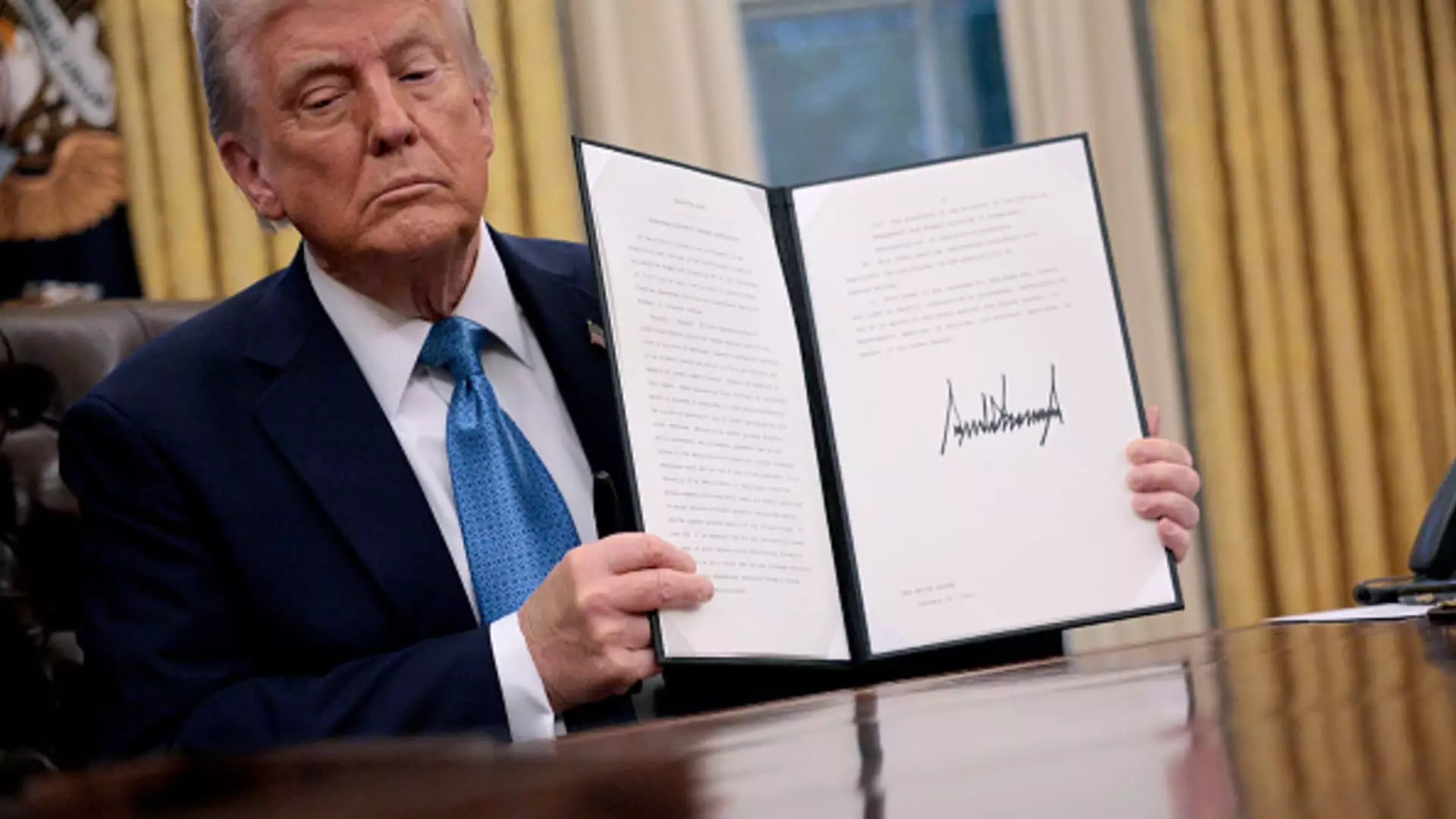The announcement of tariffs by President Donald Trump has sent shockwaves through the U.S. stock market, highlighting the potential for a tumultuous trade environment and underscoring the interconnectedness of the global economy. With significant tariffs imposed on goods imported from Mexico, Canada, and China, the implications for various sectors are profound. This article delves into the ramifications of these tariffs and the consequences for Wall Street and industries reliant on international supply chains.
Market Reactions: A Sell-off in Different Sectors
Following Trump’s announcement of a 25% tariff on goods from Mexico and Canada, as well as a 10% levy on Chinese imports, the stock market experienced a sharp downturn. Affected industries included automotive manufacturers, retail chains, and food and beverage suppliers, all of which depend heavily on international trade networks. The uncertainty created by damage to supply chains may lead to decreased investor confidence and a subsequent downturn in corporate earnings.
Goldman Sachs has issued warnings that the latest tariff measures could lead to a significant sell-off, estimating a potential 5% decline in U.S. stock prices. The introduction of tariffs signals not just higher prices for consumers but also potential operational shifts among companies seeking to mitigate the effects of increased costs. The automotive sector stands to lose considerably, as domestic production might not be able to compensate for interruptions in international supply chains.
Across various sectors, multiple companies find themselves facing the brunt of the tariffs. In the automotive industry, major players such as General Motors, Ford, and Stellantis depend extensively on cross-border manufacturing. Any disruption could complicate their logistics, driving up production costs. These companies might find themselves compelled to rethink their sourcing strategies, possibly shifting some production back to U.S. facilities, which may not only incur additional costs but also introduce significant delays in manufacturing timelines.
Apart from the auto industry, retail and food sectors are also bracing for impact. Notably, companies like Constellation Brands, which imports alcohol from Mexico, face potential market turbulence. Similarly, firms like Chipotle Mexican Grill might see rising costs for avocados, a critical ingredient in their offerings, as tariffs make imports more expensive. This situation could lead to inflated menu prices, urging consumers toward budget-friendly options.
The implications of Trump’s tariff strategy extend beyond individual firms; entire supply chains are threatened by rising costs and regulatory uncertainties. Discount retailers that rely heavily on inexpensive Chinese imports may struggle to keep prices competitive amid escalating tariffs. Companies such as Dollar General and Five Below could face declining revenues as consumers turn away from higher-priced products.
Moreover, companies involved in logistics, such as Union Pacific and Norfolk Southern, may see a downturn in business as tariffs slow the transportation of goods. Heavy duties could hinder the movement of products across the U.S. and into Canada and Mexico, thereby affecting profits for rail operators. The potential slowdown in trade could also dampen broader economic growth, presenting challenges to policymakers.
As stakeholders brace for a prolonged trade conflict, companies will have to adopt strategic adaptations to mitigate the effects of the tariffs. This may entail reevaluating global supply chains, seeking alternative sourcing options, or increasing production in domestic facilities. The plight of online retailers such as Temu and Alibaba’s AliExpress further illustrates the evolving landscape, as potential changes to the “de minimis” exemption could increase overhead costs and erode their competitive advantages.
While the immediate effects of Trump’s tariffs have led to stock market turmoil and uncertainty, the longer-term implications can reverberate through various sectors of the economy. Policymakers and businesses alike must navigate this complex landscape thoughtfully to minimize disruption and maintain economic stability in an increasingly fragmented global trade environment. The evolving situation calls for vigilance and adaptability as companies confront the challenges posed by a potentially prolonged trade war.

